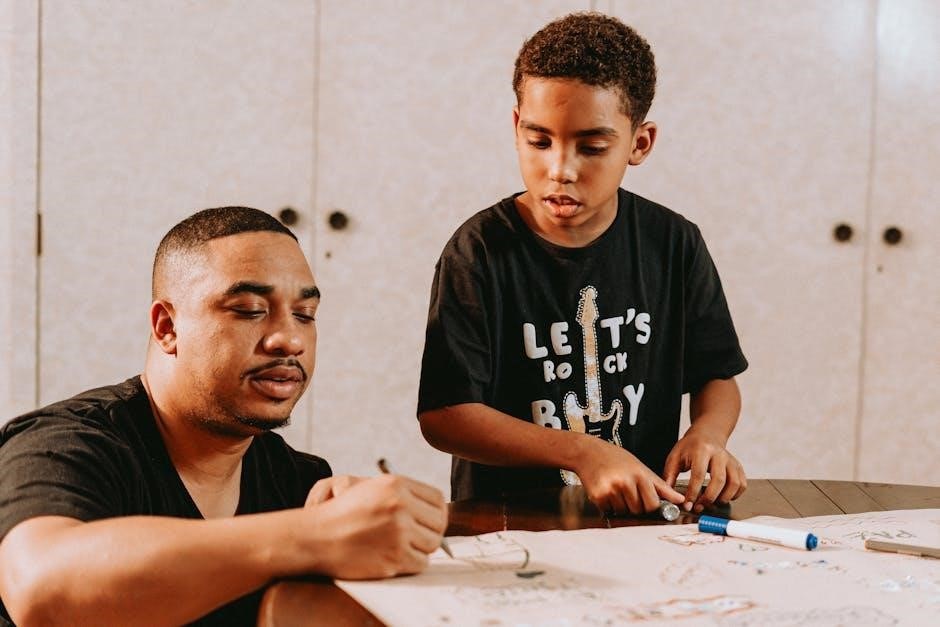Embroidery Placement Guide
Feeling overwhelmed about embroidery placement? This guide assists you! Learn essential techniques, strategies, and step-by-step instructions for balanced, professional results. We cover guidelines for various items, from t-shirts and polos to caps and children’s clothing.
General Guidelines for Garment Embroidery Placement
When embarking on an embroidery project, understanding general placement guidelines is crucial for achieving a professional and aesthetically pleasing result. Proper design placement varies depending on the garment type. However, these guidelines offer a great starting point. Consider the garment size and the design shape when determining the ideal location.
Typically, designs are centered on the chosen area, maintaining balance and visual appeal. For example, on the left chest of a polo or t-shirt, the standard guideline places the embroidery approximately 7-9 inches down from the left shoulder seam. This positions the design between the placket and side seam, or about 4-6 inches to the right of the placket. This placement is a common starting point, often used for logos or monograms.
Remember to print a paper template of your design. This helps visualize the final product. Gender also influences placement, with slight adjustments made for women’s and men’s clothing. These are just general guidelines. Always consider the specific garment and design for optimal results.
Left Chest Placement on T-Shirts and Polos
Left chest placement is a popular choice for logos and designs on t-shirts and polos, providing a subtle yet professional look. For t-shirts without pockets, a common guideline suggests positioning the embroidery 7-9 inches down from the left shoulder seam. Center the design between the center and side seam, or approximately 4-6 inches to the right of the center. This placement ensures the design isn’t too high or too close to the armhole.
On polos, where a placket exists, measure 7-9 inches down from the left shoulder seam and center the design between the placket and side seam. Alternatively, measure 4-6 inches to the right of the placket. The exact measurement can be tweaked based on the design’s size and shape, ensuring it complements the garment’s overall appearance. Always consider the garment size when determining placement. A larger shirt may require a slightly adjusted position. The goal is to create a balanced and visually appealing result that enhances the garment’s aesthetic.

Measuring for Consistent Design Placement

Maintaining consistent design placement across multiple garments is crucial for a professional and uniform look, especially for businesses or organizations. Accurate measuring is the cornerstone of achieving this consistency. Start by establishing a standard reference point on the garment, such as the shoulder seam or neckline. From this point, measure down and across to determine the precise location for the embroidery design.
Record these measurements meticulously. Use tools like rulers, measuring tapes, and even specialized tools like t-shirt rulers designed for embroidery placement. These tools help ensure accuracy and repeatability. For left chest placement, a common method involves measuring 6-8 inches from the shoulder seam and 3-4 inches from the center. However, these measurements are guidelines and may need adjustments based on garment size and design proportions. Always double-check measurements before embroidering to minimize errors and maintain uniformity across all items.

Children’s Clothing Embroidery Placement
Embroidery on children’s clothing presents unique considerations due to the wide range of sizes and styles. Determining the ideal placement can be challenging, but achieving the right balance between aesthetics and comfort is essential. For infants and toddlers, prioritize safety by avoiding areas where embroidery might irritate their skin.

Generally, center the design on the garment unless otherwise specified. Measure the distance between the top and bottom seams to find the center point. Adjust placement based on the garment style, such as onesies, t-shirts, or dresses. For smaller items like bibs, consider a smaller design size and place it higher to remain visible. When embroidering on children’s clothing, use soft, flexible threads to prevent discomfort. Always test the placement on a sample garment before embroidering multiple items to ensure the design looks proportional and well-positioned. Remember, consistency is key, even with varying sizes.
Placement on Caps
Achieving optimal embroidery placement on caps requires careful consideration of the cap’s structure and design. Standard cap embroidery typically focuses on the front panel, but side and back placements are also common. The front panel’s center is the most frequently used location, providing maximum visibility for logos or designs.
When embroidering on the front panel, maintain balance and avoid placing the design too high or too low. A general guideline is to position the design approximately 2 to 2.5 inches above the brim. For side placements, center the design on the panel, ensuring it’s not too close to the cap’s seams. Back placements often involve smaller designs or text, centered above the cap’s closure. Always use a cap frame to stabilize the cap during embroidery, preventing distortion. Consistent placement across multiple caps requires precise measurements and the use of templates.
Using Templates for Alignment
Templates are invaluable tools for achieving consistent and accurate embroidery placement. A template serves as a physical guide, ensuring that designs are positioned identically across multiple garments or items. Creating a template involves marking the precise location of the embroidery design on a piece of sturdy material, such as cardboard or plastic. This marked template is then aligned with the garment before hooping, guaranteeing accurate placement.
Templates are particularly useful for left chest designs, cap embroidery, and intricate patterns. They eliminate guesswork and minimize errors, saving time and reducing waste. When creating templates, consider the garment’s size and shape, as well as the design’s dimensions. Ensure the template is durable and reusable for repeated use. Consistent use of templates significantly improves the overall quality and professionalism of embroidered items, making them an essential part of the embroidery process. They promote uniformity and accuracy in every project.
Factors Affecting Placement (Garment Size, Design Shape, Gender)
Achieving optimal embroidery placement involves considering several crucial factors that influence the final appearance. Garment size is a primary consideration, as the design’s position must scale proportionally with the garment. A design that looks centered on a small shirt may appear off-center on a larger size; The shape of the embroidery design also plays a significant role; elongated or asymmetrical designs require careful positioning to maintain balance and visual appeal. A design that is very vertical may need to be placed higher than a more square design to be visually appealing.
Gender can also influence placement, particularly for chest designs. Designs for women are often placed slightly higher than those for men, typically 5-7 inches from the shoulder seam for women and 6-9 inches for men. These guidelines ensure a flattering and comfortable fit. Ignoring these factors can lead to misplaced designs that detract from the garment’s overall aesthetic. Therefore, a thorough assessment of garment size, design shape, and gender considerations is essential for successful embroidery placement.
Troubleshooting Placement Issues
Even with careful planning, embroidery placement issues can arise. One common problem is inconsistent placement across multiple garments. To address this, create templates or guidelines for design placement, ensuring uniformity in size and alignment. Another issue is design misalignment, which can occur due to fabric shifting during the embroidery process. Using stabilizers and hooping the fabric correctly can prevent this. Measure the distance between the top seam/edge and the bottom seam/edge. Make a horizontal line out of this.
Sometimes, the design may appear too high or too low on the garment. This can be corrected by adjusting the placement relative to the shoulder seam or neckline. For left chest embroidery, measure 6-8 inches from the shoulder seam and 3-4 inches from the center of the shirt as a starting point. If the design looks off-center, double-check your measurements and consider the garment’s construction, such as plackets or side seams, which can influence visual balance. When referring to the documentation its noted on the gender as this will impact the placement.
